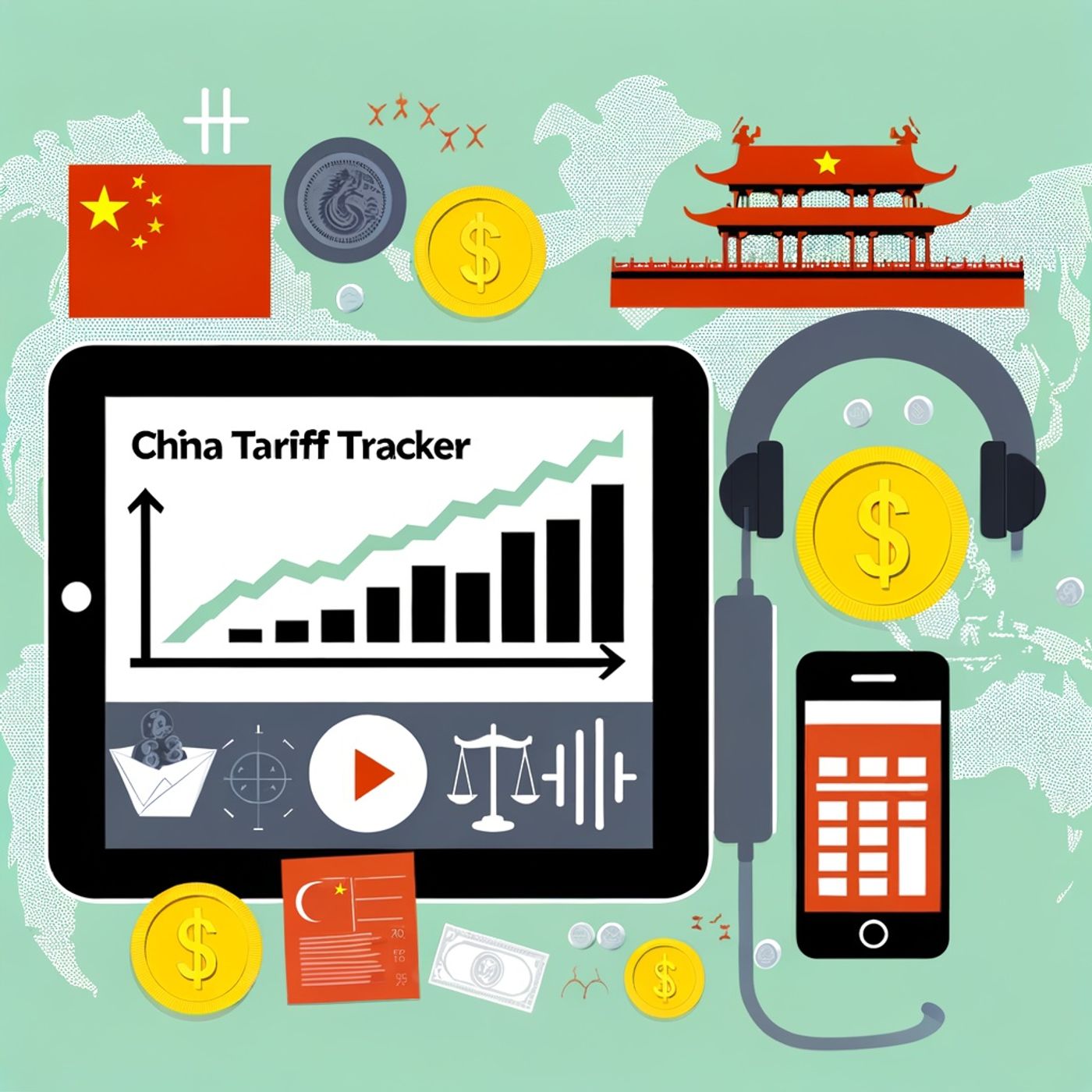US China Trade War Escalates: Tariffs Expected to Soar Between 25 and 40 Percent by November 2025
Update: 2025-09-17
Description
The U.S.-China trade relationship remains one of the hottest stories in global economics as of September 2025, and if listeners have been following the rollercoaster of tariffs, they know that the stakes—and the rates—are higher than ever.
As of now, the baseline U.S. tariff rate on most Chinese imports is the subject of intense speculation. Polymarket—a prediction market—puts the odds at 70% that the general U.S. tariff rate on China by mid-November 2025 will fall between 25% and 40%, with only a 12% chance it stays below 25%. These numbers reflect both market sentiment and the reality that U.S. trade policy under the Trump administration has taken a sharply protectionist turn. In July, President Trump announced plans to raise the baseline reciprocal tariff rate to 15–20%, though as of September, details on full implementation remain fluid and subject to ongoing negotiations.
Just a few months ago, in May 2025, the two countries reached a temporary deal that slashed U.S. tariffs on Chinese imports from previous peaks down to 30%, while China dropped its tariffs on U.S. goods to 10%. That deal also included a 90-day moratorium on new tariffs, which was subsequently extended in August, keeping current rates in place until November 10—meaning listeners should expect major headlines as that deadline approaches.
But don’t mistake the truce for stability. According to the Trade Compliance Resource Hub, the Trump administration has been aggressive on the regulatory front, revoking the de minimis exemption for Chinese goods and imposing new, item-specific tariffs—for example, a 20% duty on fentanyl-related imports since February. There’s also a growing list of investigations into critical minerals, commercial aircraft, and truck parts that could lead to additional tariffs in the coming months. Meanwhile, China has retaliated with targeted tariffs on U.S. agricultural and energy products, as well as export controls on rare earths and critical minerals.
The broader economic impact is already visible. Multinational corporations are rapidly diversifying supply chains away from China, with firms like Apple and Intel shifting production to India and Vietnam. U.S. manufacturers and retailers, however, are feeling the pinch of higher costs, and American farmers continue to face challenges as Chinese markets for soybeans, pork, and other goods remain constrained by retaliatory measures.
What’s next? The trade truce is set to expire in November, and both sides are signaling a willingness to escalate if no deal is reached. While some analysts hope for a more permanent de-escalation, others caution that economic nationalism is here to stay—meaning even if a deal happens, the days of frictionless U.S.-China trade are likely over.
Listeners, for daily updates on tariffs, trade talks, and the latest moves from Washington and Beijing, be sure to subscribe to "China Tariff News and Tracker." Thanks for tuning in, and remember: this has been a quiet please production. For more, check out quiet please dot ai.
For more check out https://www.quietperiodplease.com/
Avoid ths tariff fee's and check out these deals https://amzn.to/4iaM94Q
This content was created in partnership and with the help of Artificial Intelligence AI
As of now, the baseline U.S. tariff rate on most Chinese imports is the subject of intense speculation. Polymarket—a prediction market—puts the odds at 70% that the general U.S. tariff rate on China by mid-November 2025 will fall between 25% and 40%, with only a 12% chance it stays below 25%. These numbers reflect both market sentiment and the reality that U.S. trade policy under the Trump administration has taken a sharply protectionist turn. In July, President Trump announced plans to raise the baseline reciprocal tariff rate to 15–20%, though as of September, details on full implementation remain fluid and subject to ongoing negotiations.
Just a few months ago, in May 2025, the two countries reached a temporary deal that slashed U.S. tariffs on Chinese imports from previous peaks down to 30%, while China dropped its tariffs on U.S. goods to 10%. That deal also included a 90-day moratorium on new tariffs, which was subsequently extended in August, keeping current rates in place until November 10—meaning listeners should expect major headlines as that deadline approaches.
But don’t mistake the truce for stability. According to the Trade Compliance Resource Hub, the Trump administration has been aggressive on the regulatory front, revoking the de minimis exemption for Chinese goods and imposing new, item-specific tariffs—for example, a 20% duty on fentanyl-related imports since February. There’s also a growing list of investigations into critical minerals, commercial aircraft, and truck parts that could lead to additional tariffs in the coming months. Meanwhile, China has retaliated with targeted tariffs on U.S. agricultural and energy products, as well as export controls on rare earths and critical minerals.
The broader economic impact is already visible. Multinational corporations are rapidly diversifying supply chains away from China, with firms like Apple and Intel shifting production to India and Vietnam. U.S. manufacturers and retailers, however, are feeling the pinch of higher costs, and American farmers continue to face challenges as Chinese markets for soybeans, pork, and other goods remain constrained by retaliatory measures.
What’s next? The trade truce is set to expire in November, and both sides are signaling a willingness to escalate if no deal is reached. While some analysts hope for a more permanent de-escalation, others caution that economic nationalism is here to stay—meaning even if a deal happens, the days of frictionless U.S.-China trade are likely over.
Listeners, for daily updates on tariffs, trade talks, and the latest moves from Washington and Beijing, be sure to subscribe to "China Tariff News and Tracker." Thanks for tuning in, and remember: this has been a quiet please production. For more, check out quiet please dot ai.
For more check out https://www.quietperiodplease.com/
Avoid ths tariff fee's and check out these deals https://amzn.to/4iaM94Q
This content was created in partnership and with the help of Artificial Intelligence AI
Comments
In Channel





